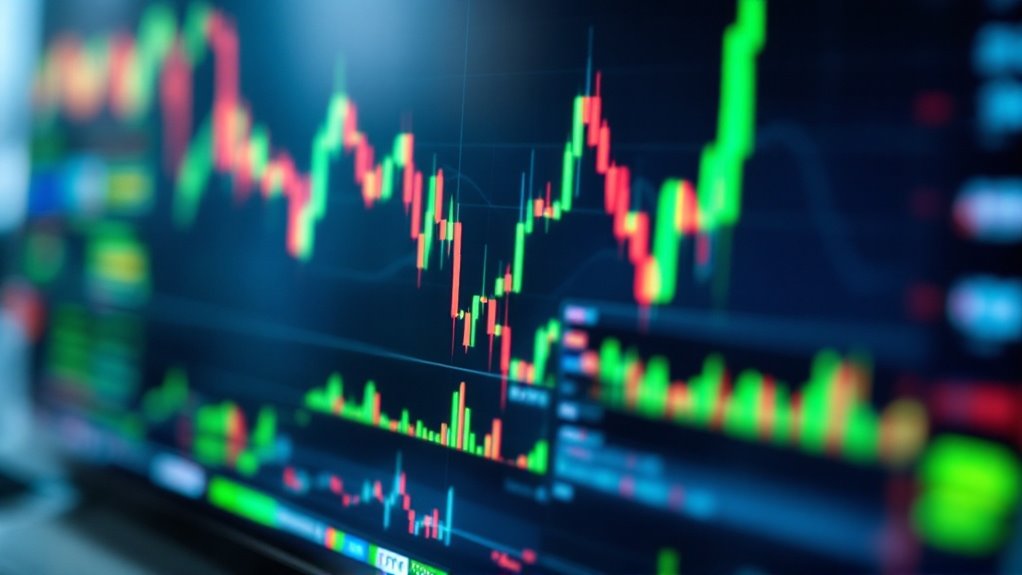Exchange-traded funds (ETFs) offer investors a sophisticated yet accessible way to achieve portfolio diversification through baskets of securities that trade like individual stocks. These versatile instruments typically feature lower fees than mutual funds while providing professional management, tax efficiency, and real-time trading capabilities throughout market hours. While most ETFs follow passive investment strategies, specialized versions can incorporate complex approaches including leverage and sector-specific focus. Understanding their structural advantages and potential risks proves essential for maximizing their benefits in modern investment portfolios.

Exchange-traded funds (ETFs) have revolutionized the investment landscape by providing investors with a versatile and cost-effective vehicle for portfolio diversification. These innovative financial instruments function as baskets of securities that trade on exchanges like individual stocks, offering investors immediate access to various asset classes, from equities and bonds to commodities and specialized sectors, while maintaining lower fees compared to traditional mutual funds. Trading commissions may increase overall investment costs when purchasing ETF shares.
The structural advantages of ETFs manifest in their operational efficiency and flexibility. Unlike mutual funds, which price once daily, ETFs trade continuously throughout market hours, enabling investors to execute trades at real-time prices. This liquidity advantage, coupled with their inherent tax efficiency and transparency through daily published holdings, positions ETFs as superior investment vehicles for many portfolio strategies. The creation and redemption process involving authorized participants helps maintain accurate pricing and market stability.
Similar to mutual funds, ETFs offer investors valuable professional management of diversified portfolios. The passive management approach adopted by most ETFs results in lower expense ratios, translating to enhanced long-term returns for investors. Despite their numerous benefits, ETFs present certain risks that warrant careful consideration. The possibility of trading at prices that deviate from their net asset value can create unexpected disparities between expected and actual returns.
Additionally, specialized ETFs, particularly those employing leverage or inverse strategies, may introduce additional complexity and risk, potentially undermining the diversification benefits sought by conservative investors. The evolution of ETF products has expanded beyond simple index tracking to include sophisticated investment strategies.
Environmental, social, and governance (ESG) focused ETFs cater to socially conscious investors, while dividend ETFs serve income-seeking portfolios. Global ETFs facilitate international market exposure, enabling investors to participate in worldwide economic growth through a single investment vehicle.
When compared to mutual funds, ETFs consistently demonstrate advantages in cost structure, trading flexibility, and transparency. The ability to trade throughout the day, combined with typically lower investment minimums, makes ETFs particularly attractive to investors seeking efficient market participation.
While not without their challenges, ETFs represent a significant advancement in investment accessibility, offering sophisticated portfolio management tools previously available only to institutional investors.
Frequently Asked Questions
How Do ETF Fees Compare to Mutual Fund Fees Over Time?
ETF fees have consistently remained lower than mutual fund fees, with 2022 averages showing ETFs at 0.16% compared to mutual funds at 0.66%.
This gap, while narrowing due to competitive pressures, reflects fundamental structural differences in management approaches.
The absence of 12b-1 fees and load charges in ETFs, combined with their primarily passive management style, contributes to their sustained cost advantage over mutual funds.
What Happens to My ETF Investment if the Fund Company Closes?
When an ETF closes, investors receive a cash distribution equal to their shares' net asset value after the fund liquidates its holdings.
However, this process can trigger unwanted tax consequences through capital gains distributions.
Investors should act promptly upon receiving closure notifications, as selling shares before the final trading day often proves more advantageous than waiting for automatic liquidation, which may involve tracking errors and extended settlement periods.
Can I Include ETFS in My Retirement Account Investments?
ETFs can be effectively incorporated into retirement accounts, including 401(k)s, IRAs, and Roth IRAs.
These investment vehicles offer significant advantages through their low expense ratios, broad diversification options, and tax efficiency.
While target-date ETFs automatically adjust risk exposure as retirement approaches, dividend and fixed-income ETFs can provide steady income streams.
The flexibility to trade throughout market hours allows retirees to adapt their portfolios to changing financial needs.
How Are ETF Dividends Taxed Differently From Stock Dividends?
ETF dividends and stock dividends share similar tax treatment fundamentally, but ETFs offer unique structural advantages.
While both can provide qualified dividends taxed at lower capital gains rates, ETFs' in-kind creation and redemption process typically results in fewer taxable events.
Additionally, ETFs' efficient portfolio management often leads to lower turnover rates and reduced capital gains distributions compared to individual stocks, enhancing their overall tax efficiency.
What Role Do Market Makers Play in ETF Trading?
Market makers serve as essential intermediaries in ETF trading by consistently providing both buy and sell quotes, ensuring continuous liquidity in the market.
Through the creation/redemption mechanism, they help maintain ETF prices close to their underlying net asset value by arbitraging price differences.
These financial institutions also manage operational short positions and utilize their expertise to facilitate smooth trading, while their competitive activities contribute to tighter bid-ask spreads and more efficient price discovery.







